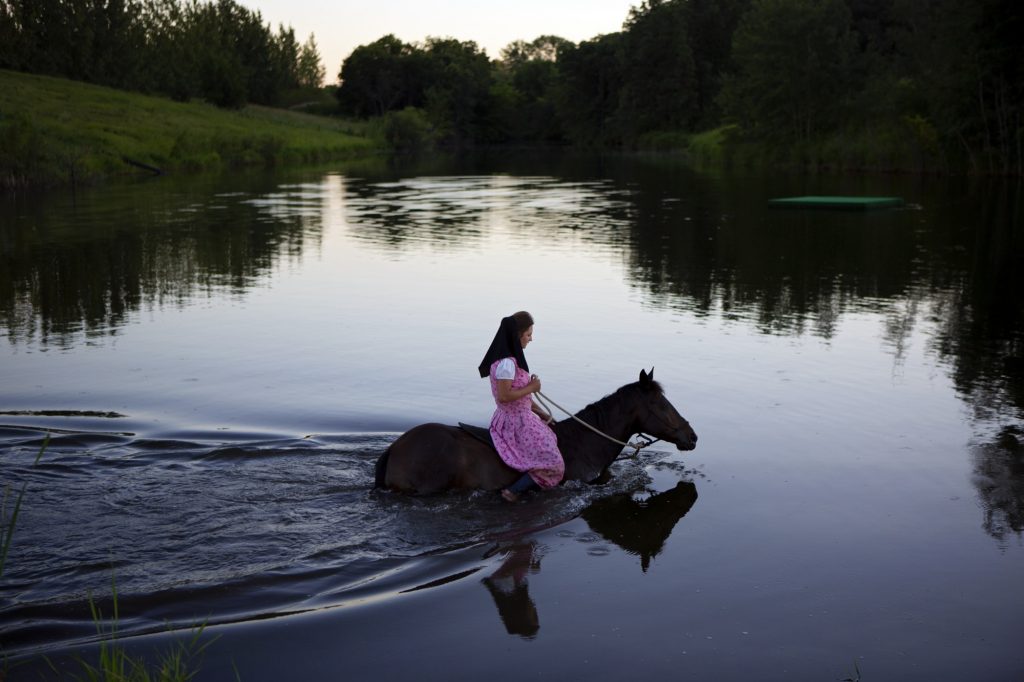Beginning with a chance encounter in 2009, the photographer has been photographing Hutterite Communities in Manitoba for 13 years.
The Hutterites, pacifist Anabaptists whose roots trace back to the 16th Century Reformation, live communally on colonies throughout western Canada and the north-western United States. Their culture continues to be preserved through deliberate separation from mainstream society and economic self-sufficiency. Despite a history of persecution the Hutterites are one of the most successful models for communal living in modern history. Hutterites are provided for throughout their entire lives and on the whole experience less of the loneliness and isolation prevalent in the modern world. The importance given to engagement in family life, social life and spirituality, as well as the defined purpose for their lives means Hutterite communities meet many of the requirements to be considered Blue Zones; areas where health, happiness and life expectancy rates are higher than average.
Colonies are kept small, typically under 200 people to maintain strong social connections, and the emphasis is on the community as a whole rather than any individual. Hutterite culture is often either romanticized or denigrated as simple or backwards. The reality is that their society is very complex. Each colony must decide how rigidly they cling to their traditions versusverses how much they adapt to the increasingly connected outside world. The Minister which occupies a leadership role is burdened with ensuring the colony stays on a path to godliness rather than worldliness. As Hutterite author Paul S. Gross wrote «We cannot please the world and God at the same time … Either we take this world with all it offers, including trouble, mental stress, sorrow, and death at the end; or else we take a better way».
Portions of Smith’s Hutterite work have been graciously supported by three Manitoba Arts Council grants.
Photo copyright: © Tim Smith.



